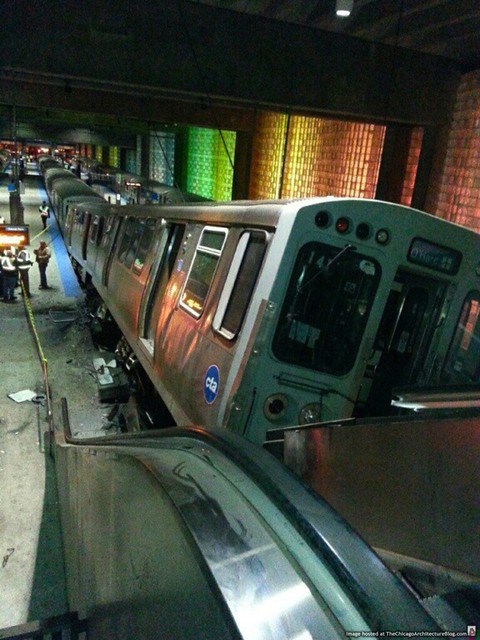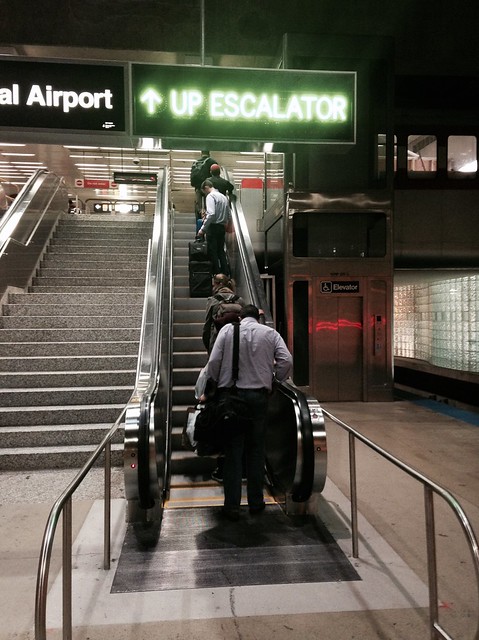Lazy air travelers rejoice! It took almost year and a half, but both escalators at the CTA’s O’Hare stop are finally operational after a catastrophic 2014 Blue Line crash. Although an ‘L’ train smashed into the escalator at high speed, miraculously, no one was killed. A single “up” escalator and the elevator have been operational in the interim.
The crash occurred in the early morning of March 24 of last year, when the operator, Brittany Haywood, failed to brake while approaching the end of the line. The train jumped the tracks and careened up the escalator, injuring over 30 passengers and causing about $9 million in property damage. Luckily, the escalator was empty at the time – otherwise there surely would have been fatalities.
Soon after the incident, Haywood admitted to falling asleep at the controls, and said she also nodded off the previous month while driving a train at the Blue Line’s Belmont stop. A National Transportation Safety Board investigation found that, as a fill-in employee, Haywood's hours were irregular, but CTA officials said she had an 18 hour break before the O’Hare crash occurred.
In the wake of the disaster, the CTA has made an effort to make employee’s hours more regular, and has increased fatigue-awareness training, the Chicago Tribune reported. The agency also lowered the speed limit for trains coming into O’Hare from 25 mph to 15 mph, and moved “trip arms” -- intended to stop runaway trains -- farther away from the platform, the Tribune reported.
So why did it take so long to repair the escalator? Work didn’t begin until this March, a year after the crash because of the long lead time require to create construction plans and fabricate custom parts, CTA spokesman Brian Steele told the Trib at the time. “It’s a complex project in a challenging and tight space,'' Steele said. "The work involves not only building the escalator itself but also designing the structural supports to connect the mezzanine and platform levels.''
The rehab, which also included stair repairs, concrete repairs to the center pocket, plus some new signage, was completed last week, according to CTA spokesman Jeff Tolman. It’s great to see one of the CTA’s most important stations is back to normal, which brings closure to an unforgettable chapter in local transit history.






